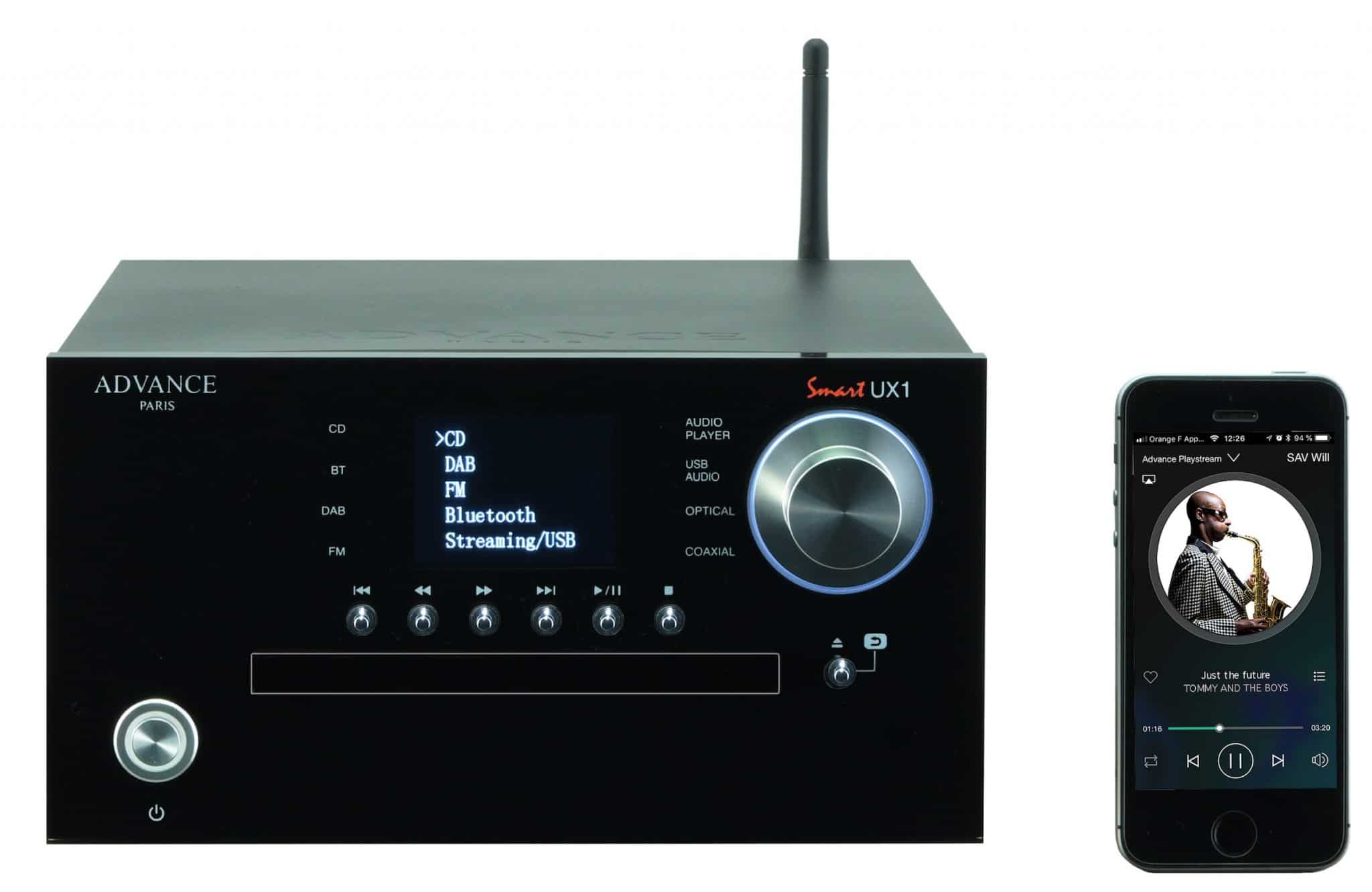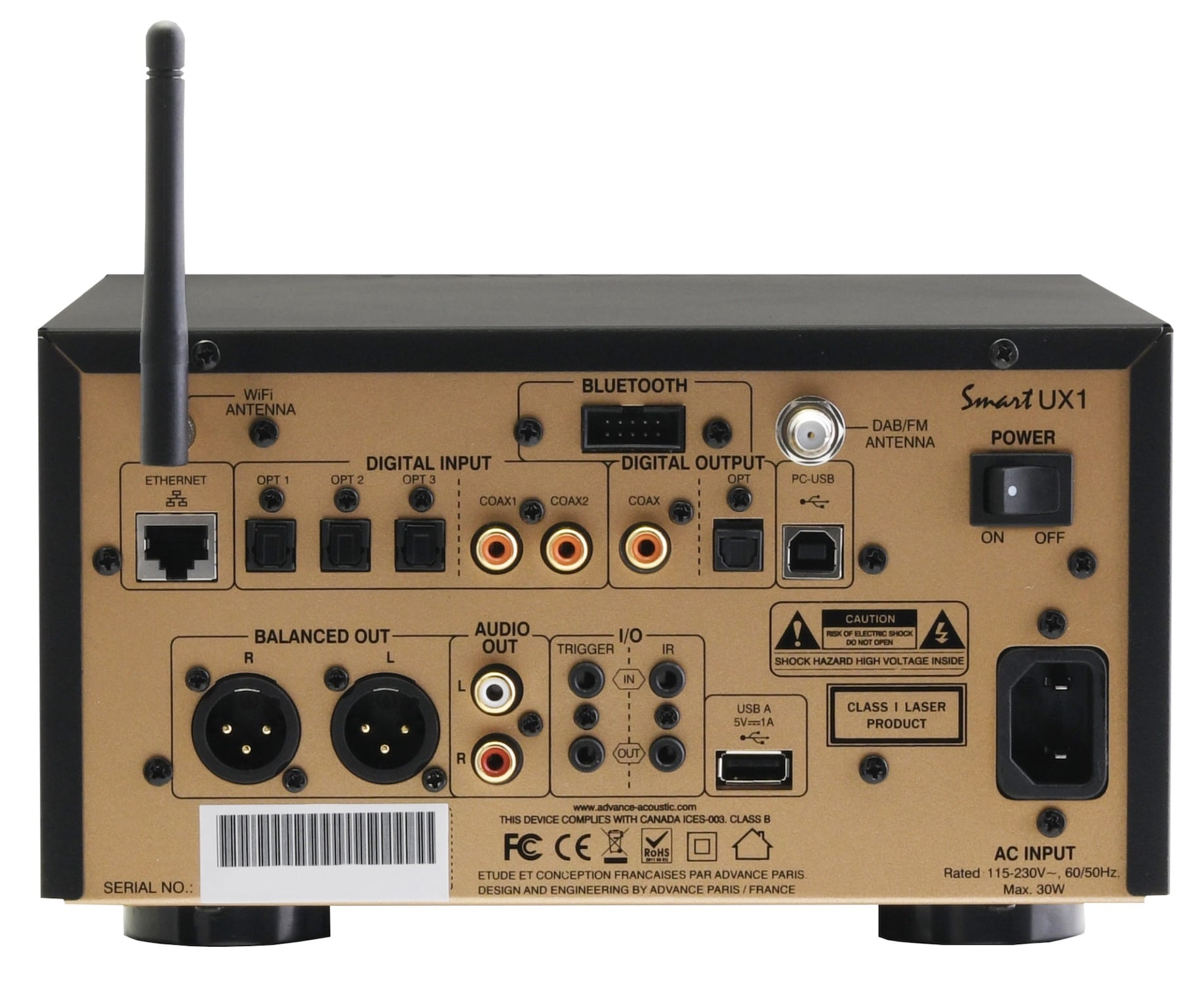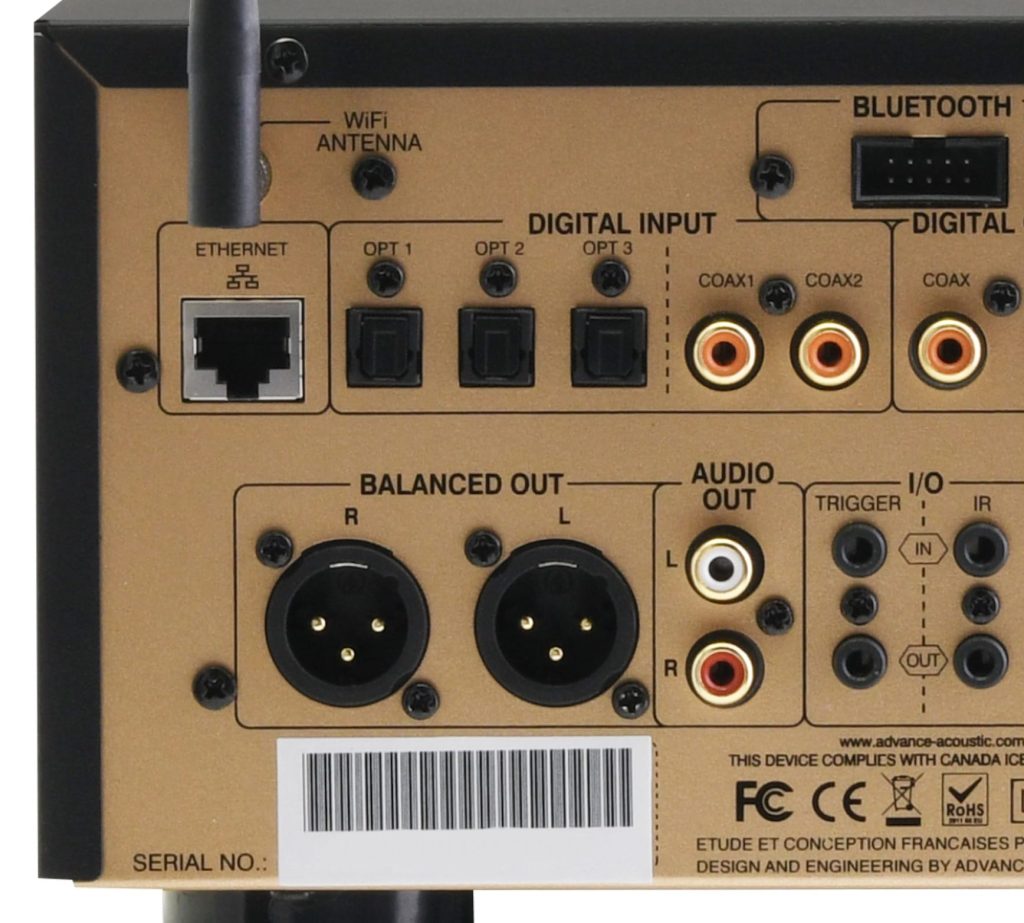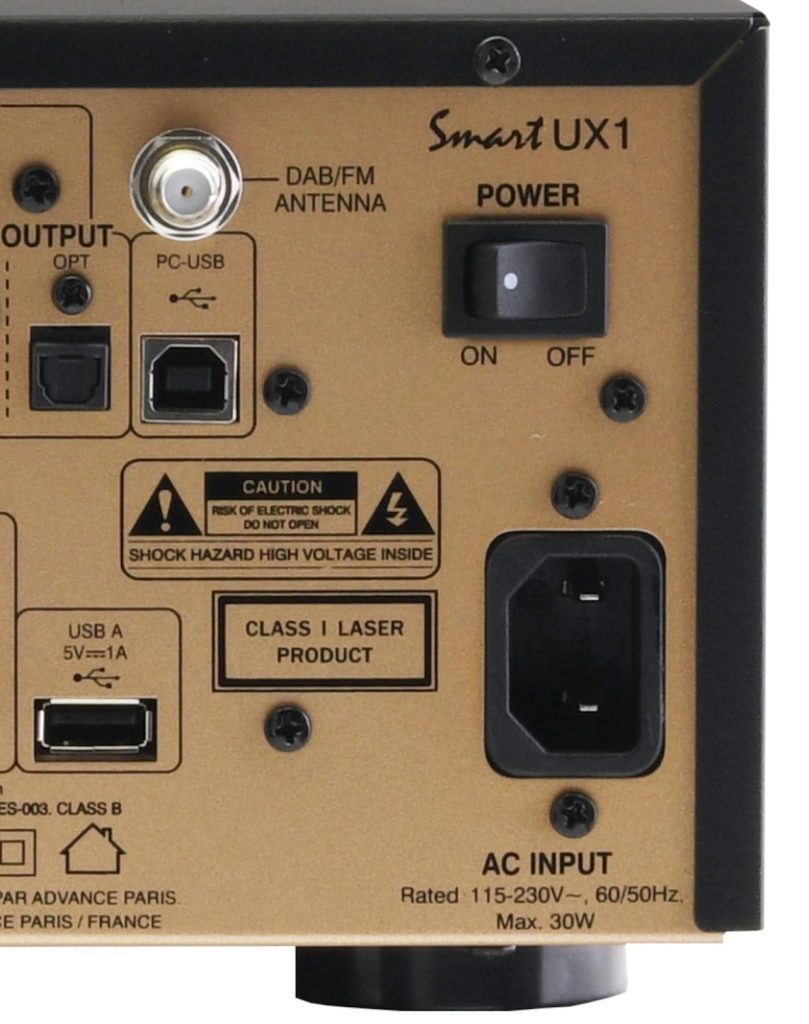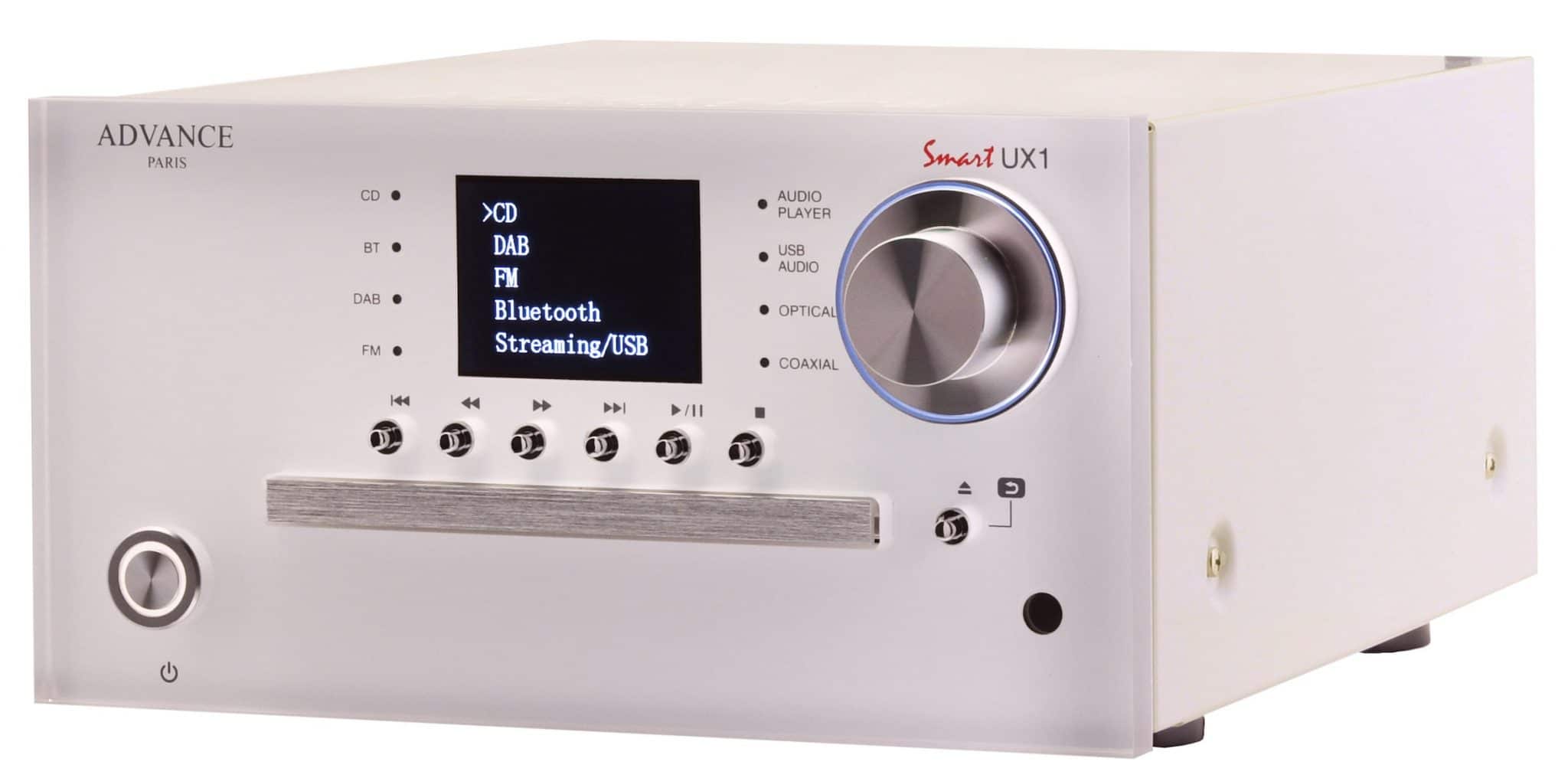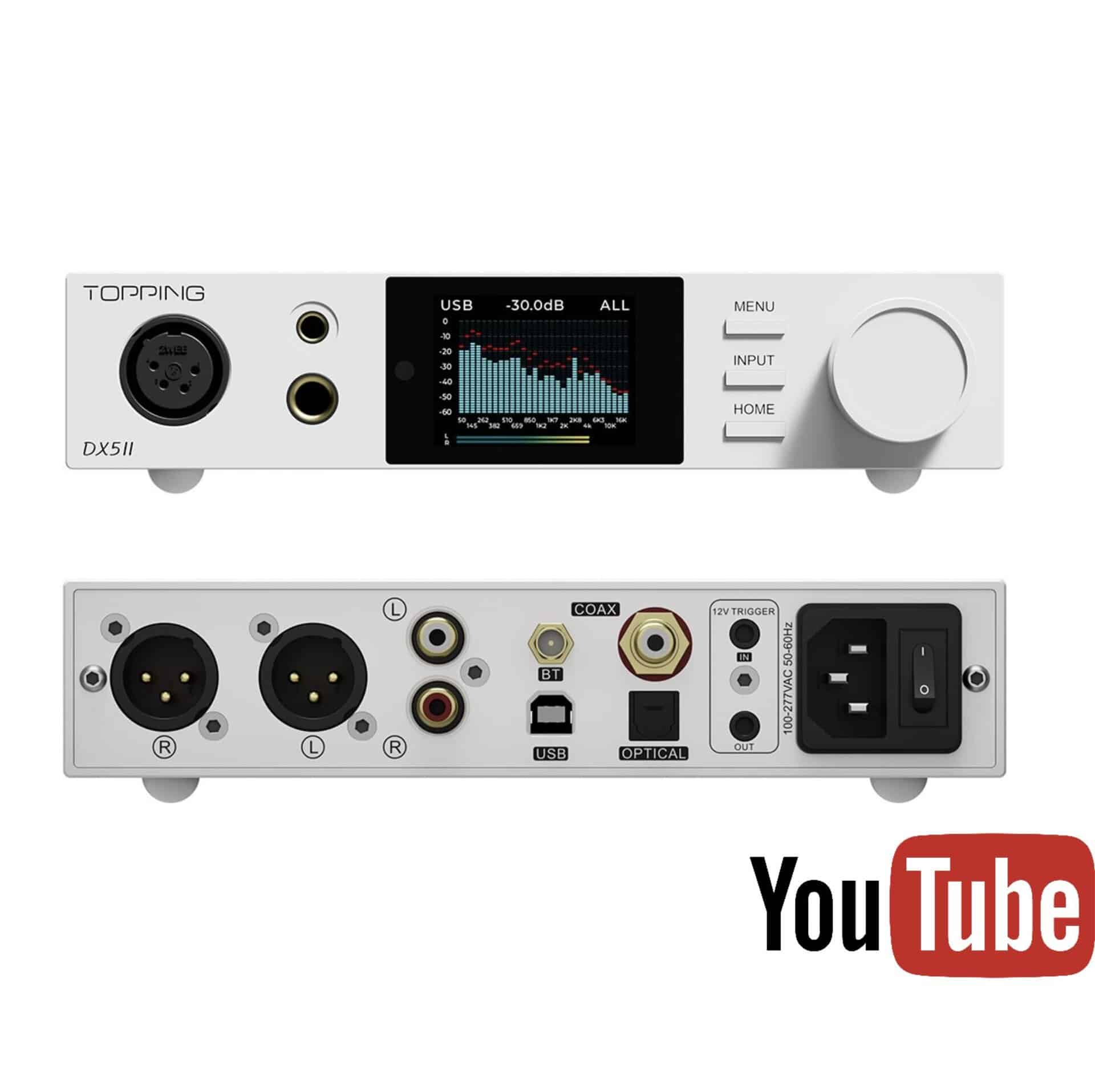The Article
UX1 Multimedia Player From Advance
15th March 2019
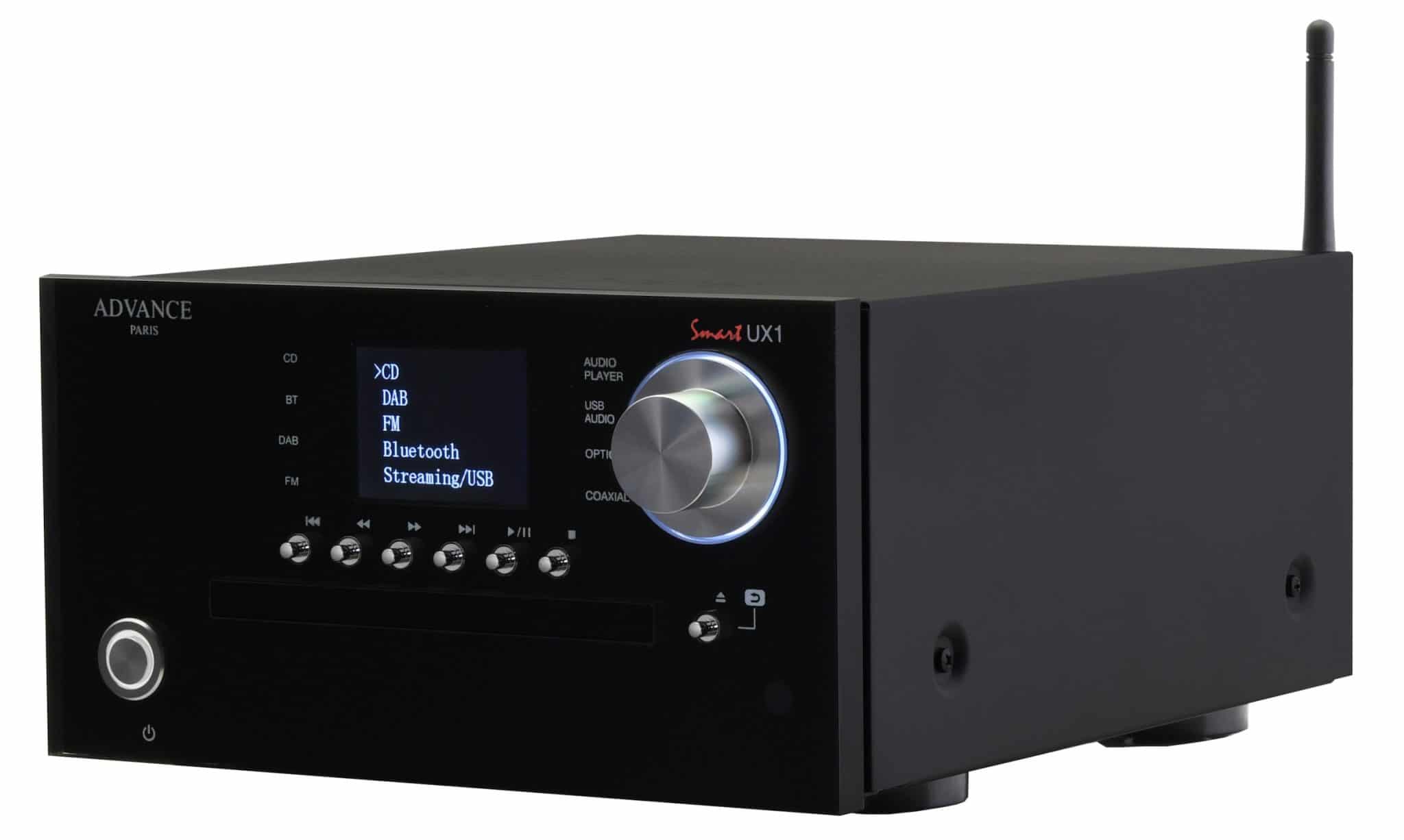
Part of a family of compact products from France’s Advance, Paul Rigby reviews the UX1 Multimedia Player
Compact and almost cube-like (kinda), the UX1 looks stylish, enough to attract the lifestyle user with its relatively minimal, yet chic frontage. It’s only when you mosey around the back does all hell break loose in terms of the busy nature of its feature set. A bit like a Hollywood film set, then. Similarly, I hoped it wouldn’t fall over if I pushed too hard.
Built around the AK4490 DAC (based on AKM’s Velvet Sound architecture), the core chip delivers 32bit/768kHz PCM and 11.2MHz DSD.
Compatible with Airplay and DLNA, the control of the system can be handled via the Advance Playstream app, downloaded from the usual iOS and Android sources. A range of music services are on offer too – more details below.
The UX1 includes a computer-like, Bluetooth Direct Digital (BDD) port for connecting the X-FTB 01 digital Bluetooth receiver/dongle. This receiver incorporates aptX. Bluetooth dongles are odd accessories in this day and age but it does bode well in terms of low noise because it keeps the circuitry outside of the main chassis.
In terms of other knobs and ports? At the front you’ll see a source/volume multifunction knob. Pressed in, the knob becomes a button that handles short and long presses (for commands such as a factory reset, variable/fixed volume, software updates and network setup). There’s also CD transport buttons, standby/power switch and window display with active source lights surrounding it. At the back? Apart from the power socket and rocker power switch, there’s a DAB/FM radio antenna port, Alexa voice control socket, that Bluetooth port and aerial, two USB ports (A and B types – the ‘A’ is also used to update the software but this is a dealer-installation only), Ethernet, three optical inputs, two coaxial inputs and a coax plus optical output. Finally, you get balanced and unbalanced analogue outs.
Spanning 130 x 230 x 310mm and weighing in at 3.8kg, this is one busy box of goodies, jam-packed full of features. That worried me a tad. There is no such thing as a free lunch, even in hi-fi, so lots of features packed into a compact chassis does risk component noise travelling from one internal area of the UX1 to another. Could the UX1 pull off a sonic trick, though?
SOUND QUALITY
Faced with a gamut of options, I plugged in the Bluetooth dongle into the rear of the UX1. The dongle then lit up, showing that it was ready and waiting. Lights flashed brighter than those used by the emergency services and I was glad this dongle was on the back of the chassis and not the front (and because of that, there’s no direct light glare during normal use). I then switched on the Bluetooth option on my iPhone 8. Pairing was quick and painless. Selecting Bluetooth on the UXI source selector, I played Kylie Minogue’s All The Lovers.
The best Bluetooth performance I’ve heard from an all-in-one system belongs to a Leema Quasar but that’s priced around three times as much as the UX1 so its expecting rather too much for the UX1 to match the Leema in any way and, actually, that proved to be the case. The UX1’s Bluetooth audio proved to be thin and anaemic with a hard upper midrange edge. On the plus side, the soundstage was pleasantly wide with good instrumental separation. It was easy to recognise individual instruments as well as the backing vocals. The acoustic guitar, for example, was especially insightful. Part of the reason for the strident performance was the nature of the lossy AAC source file but I suspect the cheek-by-jowl nature of the guts of the UX1, mentioned above, didn’t help. That said, judged by its immediate competition, the Bluetooth performance was decent – not brilliant – but decent and certainly listenable for any potential UX1 owners out there. I removed the Bluetooth dongle from the rear of the chassis from this point, to minimise electronic noise spreading to other areas of the UX1 as well as possible damage to my retina.
Speaking of Leema, I dragged an Elements CD player into the fray to test the UX1’s CD section. The Leema is priced at a similar level to the UX1 but the Leema is, of course, a specialist CD player. The UX1 is not, so the Leema should win this battle with ease. That said, the UX1 should also make a decent fist of things and I wanted to see just how well it performed when faced with a sterling test such as this.
The UX1’s CD section uses a rather thin and weedy CD tray that springs out of the chassis like a rubber snake from a joke can. The sight of a tray is in itself intriguing as many products of the UX1’s ilk tend to utilise the grab slot-type transport. The UX1’s CD tray is rather fragile looking. At school, did you ever fix a ruler to the end of a desk and then twang the free floating end? That’s what the UX1’s CD tray is like. So, once the CD tray is out, if you press upon the UX1’s CD tray and let go, it ‘boings!’ back into place. This combined visual and aural effect doesn’t infuse confidence. Nevertheless, I gave the CD section a listen.
I played Bing Crosby’s Bing With a Beat, featuring Bob Scobey’s Frisco Jazz Band and the track Let A Smile be Your Umbrella.
Again, noise seemed to be the issue here as I had to kick back the gain on my pre-amp, down it went by six or seven clicks.
Sonically, looking at the overall tonal balance, the upper mids from CD play were spotlighted by rather edgy upper mids. Hence, trumpet crescendos could be a little challenging to the ears while the Crosby baritone could have offered more in terms of texture and nuance. That said, there was still plenty of detail on offer here with the sax solo in particular being full of information. Percussion was notable by its crisp response, bass was enhanced by its impact and punch with an admirable precision to boot. The soundstage was also expansive, offering a large landscape effect that seemed to span the entire room.
As an aside, I was also very happy with the response of the included remote control during this test. Large obstructions in between the myself and the UX1 were never an issue. Commands were immediately fulfilled.
Speaking of remotes, I then installed the Advanced Playstream app, which was easy to find in the App Store. That quickly connected to my Wi-Fi system. The app searched for compatible hardware and, following the onscreen prompts, the final installation task was pretty straight forward. Once loaded, I had the option to play a range of services over the UX1 including Spotify, Tidal, vTuner, iHeartRadio, TuneIn, Qobuz, Deezer and Napster.
I played a range of music via Spotify, vTuner and TuneIn and was disappointed, in terms of feedback, that more information about the actual stream couldn’t be accessed, such as the resolution.
As for music quality? I was relatively happy with the overall performance. The music was obviously compressed and restricted in terms of dynamic range but listening fatigue was not an issue while the range of music on offer was expansive to say the least.
I then inserted a USB stick into the rear of the UX1 and played a 24bit/96kHz version of Sonny Rollins’ jazz piece, St. Thomas with the great man’s saxophone solo the centre piece of the track.
In general terms, the music was presented in a balanced and neutral fashion which says a lot for the stable nature of the USB source. Yes, there was some slight edge to the midrange here which again reflected the nature of the product but there was much to like from this track including a respectable bass performance. From this arrangement, upright bass can often go AWOL through some hi-fi components so the UX1 did well to maintain a broad sonic balance while piano was admirably presented in terms of detail. Percussion, which was subtle in nature and delicate in application, was tracked well. You never felt short changed in its performance. The external nature of the USB stick source was, I felt, a major assistance in terms of reducing overall noise.
I could say the same about the jazz vocal piece, A Nightingale Sang in Berkley Square from Carol Kidd at 16bit/44.1kHz which, although suffering a tad from dynamic range restriction, offered a good tonal balance that proved a pleasant listen. The broad soundstage allowed room for each instrumentalist to manoeuvre and play, the bass was powerful but not overbearing while Kidd’s performance was lucid and informative.
Again, the remote worked well here, the USB music output was controlled efficiently as it utilised the same buttons used to control CD play.
Finally, I pugged my Astell&Kern AK120 into the optical port and played Dire Straits’ Money For Nothing at 24bit/88.2kHz. Again, the improvement of the external source did help to open out the midrange. This was the first time I’d heard plenty of air and space in the soundstage of musical playback and the AK120’s inherent quality was the reason. Forceful and punchy, the track was epic in tone and grand in scale with a relatively relaxed demeanour.
CONCLUSION
The compact UX1 is a trade-off that packs a lot of technology into a small chassis but with a sonic compromise, as noted above. That said, the UX1 provides tremendous value for money that will make it an attractive proposition for many music fans. Everything works well and efficiently too. The UX1 provides a host of digital options that, for some will be all they will ever need.
UX1 ADVANCE PARIS MULTIMEDIA PLAYER
Price: £999
Tel: 0843 289 8723
Email: [email protected]
Website: advance-acoustic.com/en
TO BUY CLICK BELOW:
EUROPE – https://amzn.to/3kTOFzY
GOOD: feature packed, small footprint, value for money, easy to use, external source output
BAD: strident midrange
RATING: 7
Don’t forget to check out my Facebook Group, The Audiophile Man: Hi-Fi & Music here: www.facebook.com/groups/theaudiophileman for exclusive postings, exclusive editorial and more!]
REFERENCE
iPhone 8
Benchmark DAC2 HGC
Arcam irDAC-II
Astell & Kern AK120 (Red Wine modded)
Leema Essentials CD Player
Rega Brio-R amplifier
Q Acoustics 3020i speakers
Spendor A1 speakers
Black Rhodium cables
Blue Horizon Professional Rack System
Harmonic Resolution Systems Noise Reduction Components

